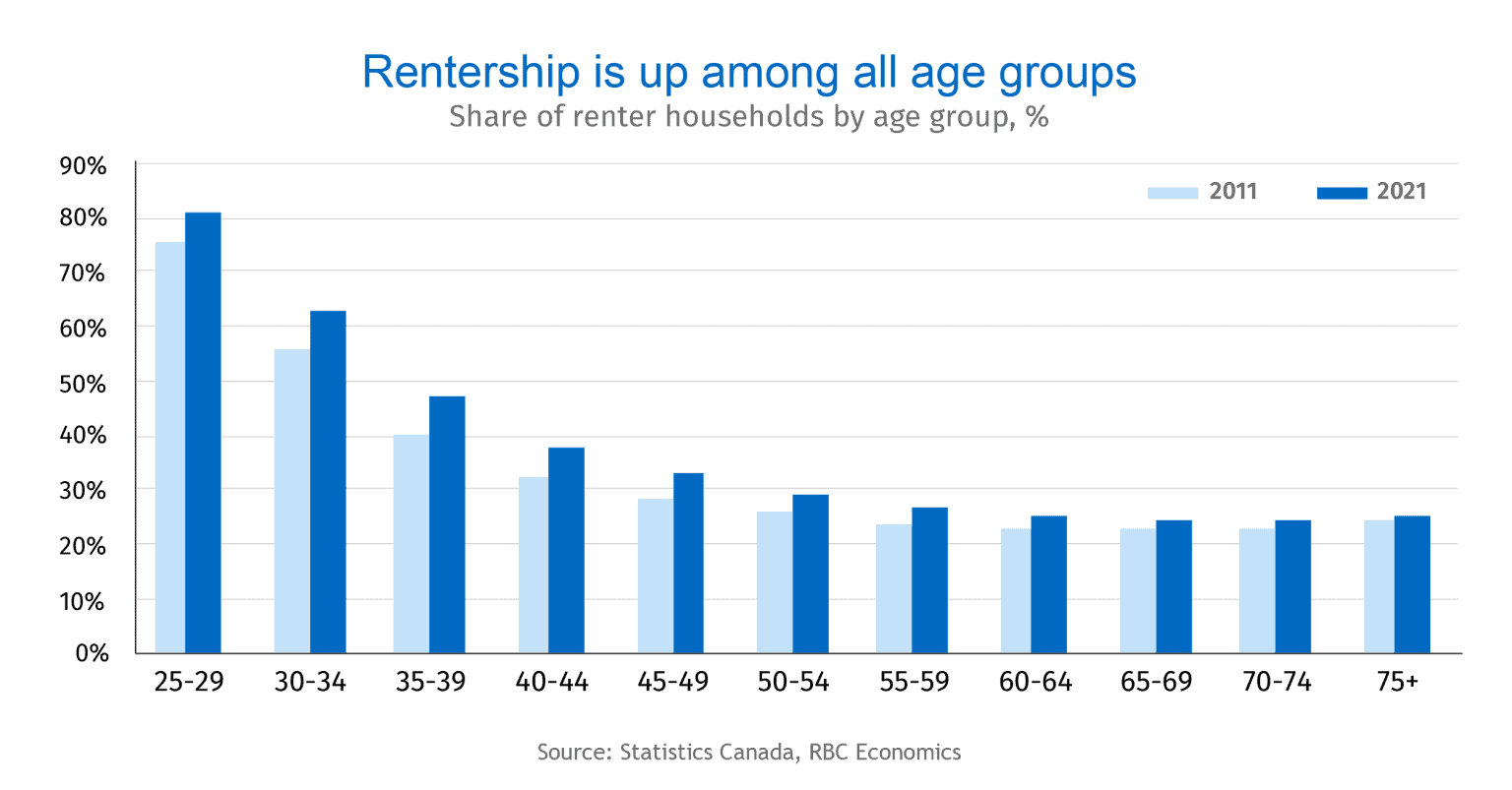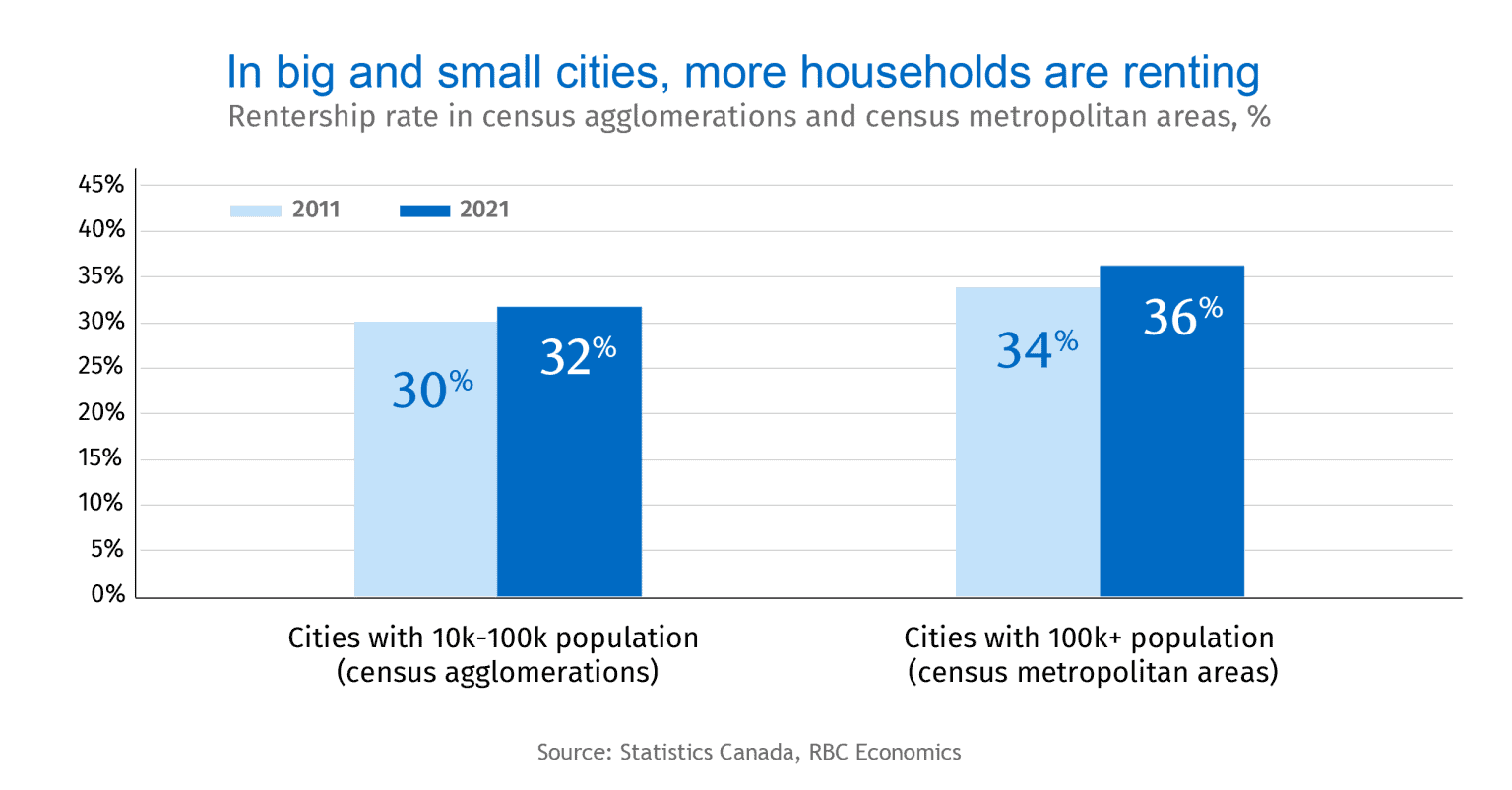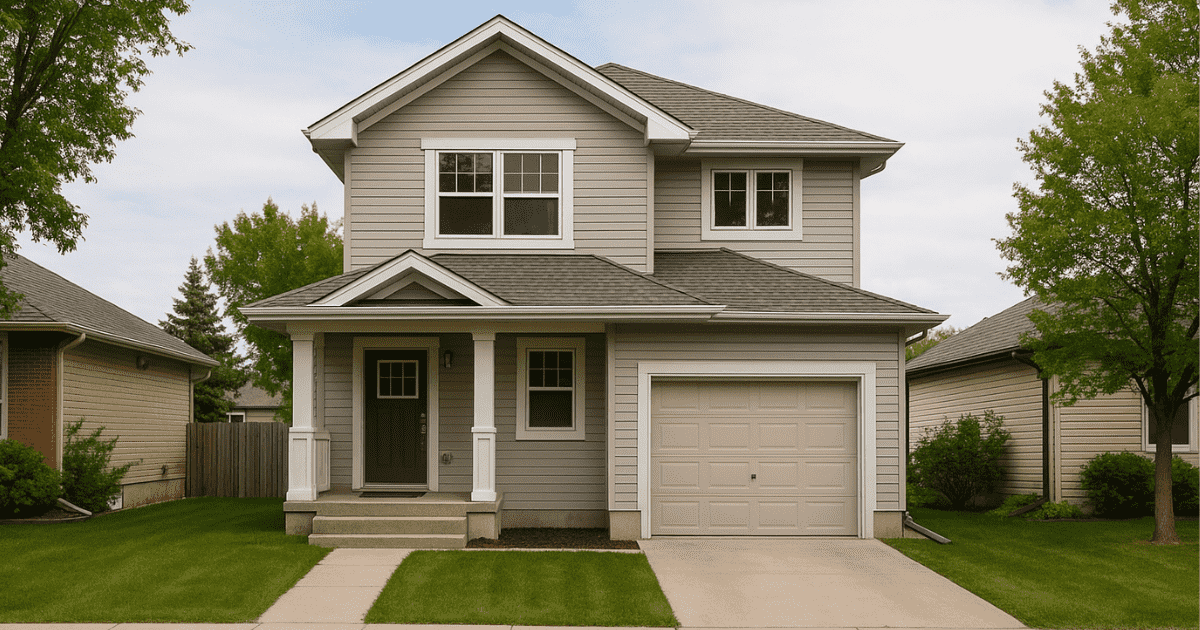The number of Canadians renting their homes is at an all-time high, according to a new report from RBC.
Economists Robert Hogue and Rachel Battaglia looked at information gathered through the 2021 Census. They say five million households rented the home they lived in last year—up from more than four million a decade earlier.
While owner households still dominate by a ratio of two-to-one, renters accounted for most of the growth over the past 10 years, increasing by 876,000 homes (22 per cent) compared to a rise of 770,000 (eight per cent) in owner households.
Millennials are renting longer than their parents
Economists say there’s plenty of evidence that younger generations aren’t climbing the housing ladder like their parents did. “Data suggests millennials’ ownership rates are lagging those of previous generations at the same age,” the report states. “And millennials are lingering in rentership three to five years longer than their baby boomer counterparts.”
But economists say this isn’t necessarily by choice, citing challenging affordability conditions as the principal reason for the younger generations’ delay in becoming homeowners. “Despite many programs to help first-time homebuyers, the rate of home ownership (66 per cent in 2021) is now trending lower and getting ever-closer to the OECD average (64 per cent).

But it’s not just young people renting…
Renting isn’t limited to younger generations living in the city. Economists say recent census data points to a broader shift over the last decade. Between 2011 and 2021, baby boomers, the largest generation of Canadians, surpassed millennials as the fastest-growing group of renters.
The share of renter households has increased across municipalities of all sizes, according to the report. Over the last ten years, renter growth was slightly stronger in smaller cities (22 per cent) than in larger cities at (22 per cent). Economists believe the widespread shift toward renting suggests affordability issues in large urban areas may not be the only driving force.

Additional demographics are fuelling rental demand
Immigration and an aging population are also driving the demand for rentals, say Hogue and Battaglia. Canada’s rapidly growing immigration targets have significantly boosted demand for rental housing.
According to the report, of the one million recent immigrants living in private dwellings, 56 per cent (640,700) were living in rented accommodations in 2018. That’s nearly two times the national average, leaving immigrants to represent a disproportionately high share of rental households in Canada.
RBC says Canada’s aging population has also bolstered demand, “Of the five million tenant-occupied dwellings recorded in 2021, nearly a quarter (22 per cent) were occupied by seniors aged 65 and up. That’s a three percentage-point increase from the 19% share reported in 2011.”
Interestingly, more Canadians are choosing to live alone. Since two incomes are often necessary to cover the high ownership costs, many of these individuals rent. According to the report, as of 2016, persons living alone overtook married couples as the most prominent household type, representing nearly 30 per cent of all households last year.
“We expect these demographic and behavioural trends to continue fueling demand for rental housing in the years ahead,” the report reads.
More rental options needed
Economists expect there will be a continued strain on Canada’s rental stock– already stretched and inadequate in many parts of the country. They’re calling for “a lot more” of the right kind of rental units to meet demand and income levels. “This includes rental options suitable for families…in neighbourhoods close to schools and other amenities.”
RBC says the sharp rise in renter households living in single and semi-detached homes (+33 per cent) over the last 10 years also speaks to a growing need for rental housing in lower-density areas.
Economists say addressing the missing middle in the country’s largest cities would go a long way toward broadening rental options.
“And as the federal and some provincial (e.g. Ontario) governments aim to double housing construction over the next decade, there’s a golden opportunity to do just that through the right mix of policies, regulatory changes and incentives,” the report reads.
Read the full report from RBC here.














